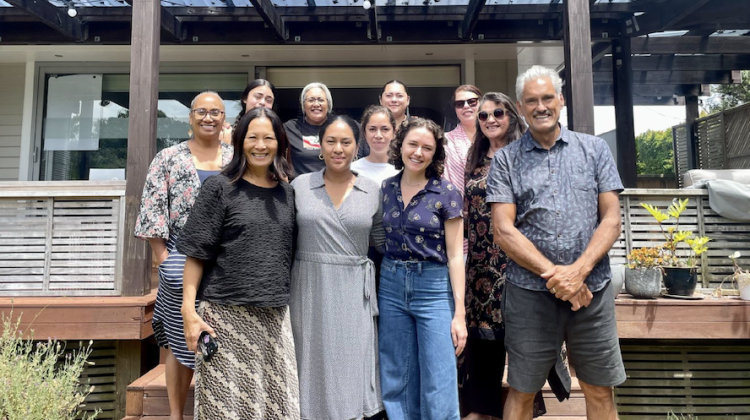Learning from the Kaupapa Māori Research Approach

As we near July, the rhythms of summer are beginning to settle across the MIT campus. To many, the summer months and the Independent Activities Period (IAP), a four-week pause from the regular demands of the academic year in January, appear to be breaks from research and work. But for many in the MIT community, these periods of time provide an opportunity for a pause and reflection, flexible teaching, exploration of new ideas, and independent study and research. Activities offered during these breaks from the normal rigor of the year open access to engage with a wider variety of academic and non-academic topics to enhance and promote cross-collaboration between fields not traditionally linked. Many in the DUSP community utilize these time periods as a chance to conduct fieldwork and use their skills and technical knowledge on behalf of clients in studios and practicum.
During IAP 2024, DUSP doctoral students Margaret Haltom and Jackie Paul spent a month immersed with the Pūrangakura Māori Research Center in Tāmaki Makaurau, Aotearoa New Zealand. Pūrangakura provides research that supports and enhances the lives of Indigenous Māori. Haltom joined Generation Kāinga, a community-based participatory research initiative that empowers rangatahi Māori (Māori youth) to transform the future of kāinga through Indigenous collective and participatory processes, making Aotearoa the best place for rangatahi and their whānau.
The Generation Kāinga initiative involves over 40 Māori scholars, experts, leaders and practitioners across Aotearoa New Zealand, specializing in Māori housing, environmental sustainability, rangatahi and whānau (family) well-being and economic prosperity. They are a pan-tribal group who are not only highly experienced in their field of work but also dedicated to their iwi, hapū and communities. Paul plays an integral role in leading the transformative Generation Kāinga initiative.
“Mutual interests brought Jackie and me together. In our homelands, on opposite sides of the world, we’re each researching pathways for housing affordability: shared equity housing and community land trusts, emergency housing solutions, eviction prevention, among other overlapping policy interests, and each committed to honoring the wisdom embodied in communities who have resisted land dispossession,” writes Haltom in a reflective piece on her experiences over IAP. “ We share approaches, too, each prioritizing relationships with those most impacted by–yet most overlooked in–policy and planning decision-making and amplifying their voices in research. There’s an inherent connection between our work, as housing decommodification movements are rooted in Indigenous values of land stewardship, and participatory action research (PAR) draws inspiration from Indigenous efforts to decolonize conventional research practices.”
Haltom’s research explores local approaches to anti-displacement affordable housing development. She partners with resident researchers and neighborhood leaders of an emerging community land trust in her hometown of Memphis, Tennessee; together, they seek to scale the CLT model while preserving grassroots governance and centering long-erased neighborhood memories in the development plans.
Paul's research at Pūrangakura delves into the critical area of Māori housing, tackling pressing issues that stand at the intersection of social justice, cultural identity, and the fundamental right to housing. Her work confronts the reality of youth homelessness within Māori communities, shedding light on the systemic barriers and historical injustices that have left far too many rangatahi Māori without a place to call home. While her thesis research is situated at the intersection of law and planning, it investigates the rights related to land and housing enshrined in treaties between Indigenous peoples and colonial governments and their implications for Indigenous communities and planning practices across various jurisdictions.
“The kaupapa Māori approach is foundational to the Pūrangakura workplace, where researchers look out for their colleagues as extended family. Team members attend to each other’s childcare needs, prepare food for one another, and children are a consistently welcome presence in the workplace,” writes Haltom. “Tasks often overlooked as administrative in U.S. settings are valued as the backbone of the workplace: dedicated team leaders are stewards of essential workplace needs, coordinating meetings and planning meals. All team members are equally valued in the research process, too. During a grant proposal, the entire office gathered to brainstorm, define the goals of the grant, and then journeyed to visit Māori community partners who knew the most about the topic. Community partners were soon visiting or zooming into the office to drive the research questions and goals.”
Haltom’s learning exchange was made possible with the generous support of MIT’s Priscilla Gray King Public Service Center and MIT’s International Science and Technology Initiatives.
Read Haltom’s full reflections on her shared learning experience
Learn more about and support Pūrangakura


